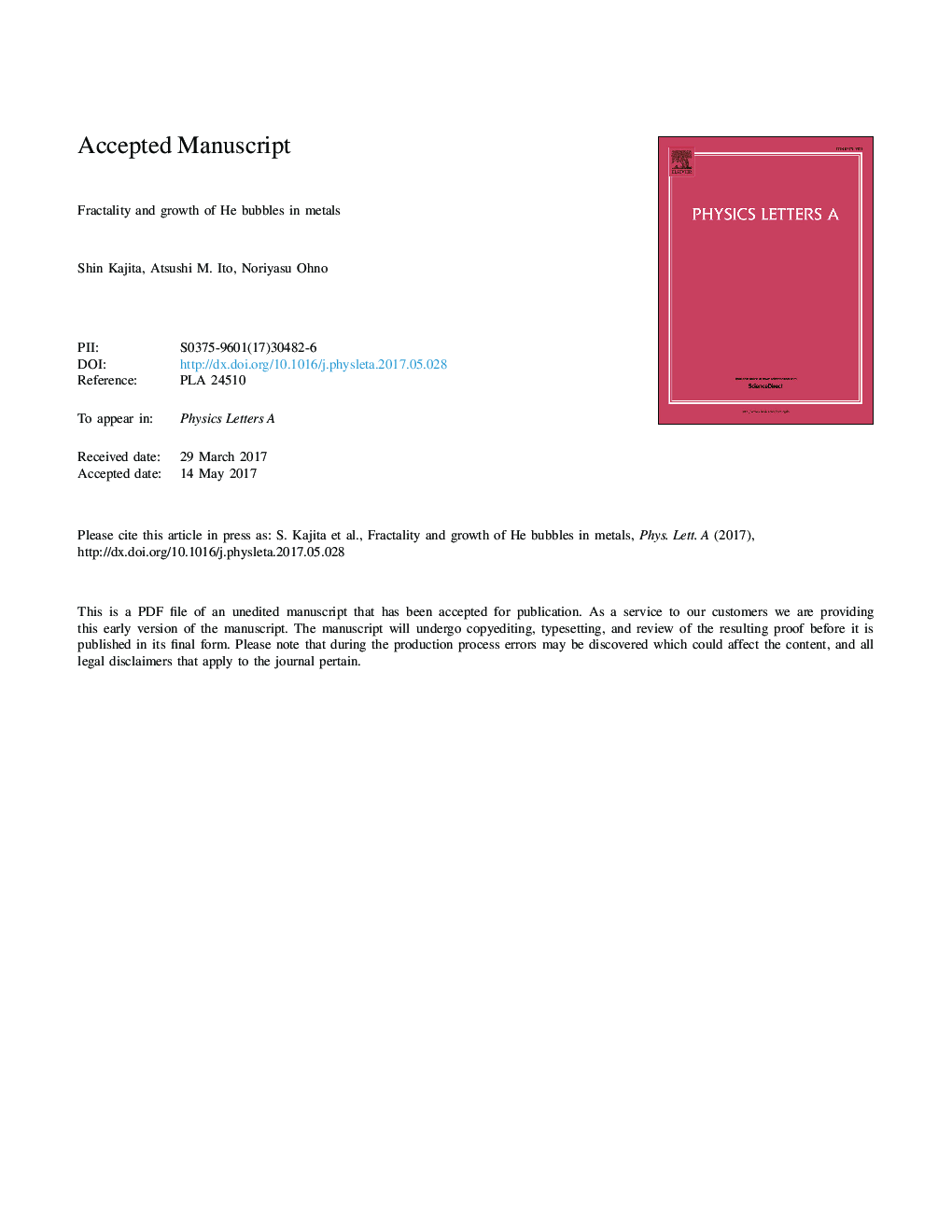| Article ID | Journal | Published Year | Pages | File Type |
|---|---|---|---|---|
| 5496543 | Physics Letters A | 2017 | 22 Pages |
Abstract
Pinholes are formed on surfaces of metals by the exposure to helium plasmas, and they are regarded as the initial process of the growth of fuzzy nanostructures. In this study, number density of the pinholes is investigated in detail from the scanning electron microscope (SEM) micrographs of tungsten and tantalum exposed to the helium plasmas. A power law relation was identified between the number density and the size of pinholes. From the slope and the region where the power law was satisfied, the fractal dimension D and smin, which characterize the SEM images, are deduced. Parametric dependences and material dependence of D and smin are revealed. To explain the fractality, simple Monte-Carlo simulations including random walks of He atoms and absorption on bubble was introduced. It is shown that the initial position of the random walk is one of the key factors to deduce the fractality. The results indicated that new nucleations of bubbles are necessary to reproduce the number-density distribution of bubbles.
Keywords
Related Topics
Physical Sciences and Engineering
Physics and Astronomy
Physics and Astronomy (General)
Authors
Shin Kajita, Atsushi M. Ito, Noriyasu Ohno,
